Why is the tub interior of my Samsung DW60H3010FW stained?
- SShelby AndersonSep 2, 2025
If your Samsung Dishwasher has a stained tub interior, it might be from using detergent with colorant. Ensure you are using a detergent without colorant.

Why is the tub interior of my Samsung DW60H3010FW stained?
If your Samsung Dishwasher has a stained tub interior, it might be from using detergent with colorant. Ensure you are using a detergent without colorant.
Why is detergent left in dispenser cups of my Samsung Dishwasher?
If you find detergent left in the dispenser cups of your Samsung Dishwasher, it's likely that dishes are blocking the cups. Re-load the dishes properly to ensure the detergent cups can open fully.
Why is there cloudiness on glassware from my Samsung DW60H3010FW Dishwasher?
If there's cloudiness on glassware in your Samsung Dishwasher, it could be due to a combination of soft water and too much detergent. Try using less detergent if you have soft water and select a shorter cycle to wash the glassware.
Why is there yellow or brown film on the inside of my Samsung DW60H3010FW Dishwasher?
If your Samsung Dishwasher has a yellow or brown film on the inside surfaces, it could be from tea or coffee stains. Try removing the stains by hand using a solution of 1/2 cup of bleach and 3 cups of warm water. Remember to wait 20 minutes after a cycle for the heating elements to cool down before cleaning. If it's an overall film, it might be due to iron deposits in your water, and you may need to contact a water softener company for a special filter.
Why are dishes not dried in my Samsung DW60H3010FW?
If your Samsung Dishwasher leaves dishes undried, the rinse agent dispenser might be empty. Refill the rinse agent dispenser.
Why is my Samsung DW60H3010FW making so much noise?
If your Samsung Dishwasher is making unusual noises, remember that some sounds are normal, like the soft food shredding or the detergent cup opening. Make sure utensils are secure in the baskets and that nothing small has fallen into them. If you hear a motor humming, it might be because the dishwasher hasn't been used regularly. To keep the seal moist, fill and pump out water weekly if you don't use it often.
Why are dishes and flatware not clean in my Samsung DW60H3010FW Dishwasher?
If your Samsung Dishwasher isn't cleaning dishes and flatware properly, there might be a few reasons. Ensure you're selecting a wash program appropriate for the load's soil level. Also, check that large dishes aren't blocking the detergent dispenser or spray arms, as proper rack loading is crucial for effective cleaning.
| Door color | White |
|---|---|
| Control type | Buttons |
| Product size | Full size (60 cm) |
| Tub material | Stainless steel |
| Built-in display | Yes |
| Appliance placement | Freestanding |
| Cycle time | - min |
| Noise level | 52 dB |
| Drying system | Condensation |
| Delayed start timer | - |
| Dishwashing programs | Eco |
| Number of place settings | 12 place settings |
| Number of washing programs | 3 |
| Drying class | A |
| Annual water consumption | 3920 L |
| Annual energy consumption | 289 kWh |
| Current | 10 A |
| Connected load | 2100 W |
| AC input voltage | 230 V |
| Drain pump power | 30 W |
| AC input frequency | 50 Hz |
| Circulation motor power | 85 W |
| Water consumption per cycle | 14 L |
| Energy consumption per cycle | 1.02 kWh |
| Package depth | 645 mm |
| Package width | 655 mm |
| Package height | 880 mm |
| Package weight | 51000 g |
| Depth | 600 mm |
|---|---|
| Width | 598 mm |
| Height | 845 mm |
| Weight | 43000 g |
Explains warning symbols and basic safety precautions for dishwasher use.
Provides guidelines for ensuring children's safety around the dishwasher.
Covers electrical safety, grounding, water supply, and drain hose connections.
Instructions on placing, levelling, and initial startup checks for the dishwasher.
Guides on adjusting the water softener and loading salt for optimal performance.
Details on refilling rinse aid, adjusting settings, and using the detergent dispenser.
Instructions on loading dishes into upper/lower baskets and identifying suitable items.
Step-by-step guide on starting, changing, and adding dishes to wash cycles.
Provides a table of wash programs, description, detergent, time, energy, and water consumption.
Instructions for cleaning filters, spray arms, door, and routine upkeep.
Guidance for protecting the dishwasher during winter and preparing for holidays.
Lists common issues, their possible causes, and recommended actions for resolution.
Details the meaning and possible causes of error codes displayed on the dishwasher.
Lists technical specifications like model, power, dimensions, and capacity.
Describes loading for comparability tests according to EN 50242 for different models.
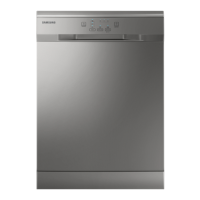
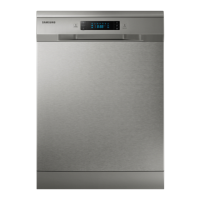

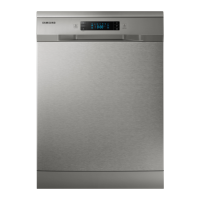


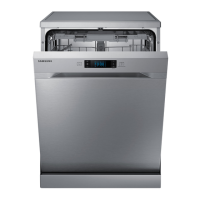


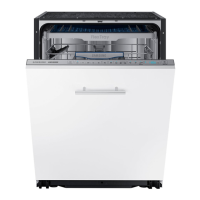


